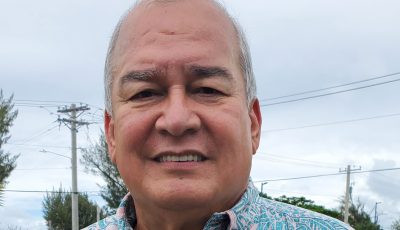Chamorita and Chamorito
In the early ’80s when I resided in Guam, the term Chamorita and Chamorito were somewhat similar to the “dalaginding” or “balasitang” and the male “binarito” in Pilipino, referring to a young, modest, and petite girl, and a strapping sapling of a boy, respectively.
It was still the same when I came to visit Saipan in 1989, and when I came to reside in 1998. The terms took a holiday while I was with PSS and before I left in 2008 to deal with a case of cervical spondylosis, in the Philippines, the United States and China. I did hear the word first used to refer to a young Chinese girl from Dong Bei, about 120 lbs, learning the ropes of survival in the “wilds” of Micronesia circa 2010.
About half a decade later, I find myself back on Saipan and my friend has bloomed to 280 lbs and still blossoming. On our encounter again, she was still called “Chamorita,” except this time the term referred to her size. In fact, the new term to refer to da pangzi (being fully rotund) for the female is…you guessed it, Chamorita!
This was confirmed when I met one of my former 6th grade students and she told me that one of her classmates has grown to be a Chamorita. It also became obvious that a young boy with a protruding belly was called Chamorito, and it no longer had to do with age as it did with size. To be “Chamorro” has become a sign of becoming a candidate for rotundity and shortened longevity! We will dismiss the racial timbre, tone and prone-to-diabetes connotation. The term for NMI ethnicity has become synonymous with size, but now referring to all nationalities of a girth measure!
For instance, in CK on Chalan Joaquin Doi are pockets of Indian residents who used to be as slim as the guys in Aurangabad in Deccan Maharashtra, India in the ’70s who finger-scooped their food while gathered around a table a foot above the floor. With such amenities, one cannot afford to have an extra pound of unnecessary flesh to carry around. The CK guys, however, have definitely become Chamorros, even those who do ablution five times a day rather than greet you Namaste.
To be sure, I have added a couple of inches to my midsection as well, and many of my acquaintances a decade back have added a few more measure to their girth, so this must be an improvement of culinary immensity. Yup. We’ve grown fat, and do not burn it off with exercise as we have become motor-dependent in this 5×12 mile island in the west Pacific.
I often grab my backpack and an umbrella (it does rain or the intensity of the sun does burn our beautifully brown skin) to walk the distance between Antonio Apa St. in Finasisu to the CK Post Office. It is a good half-hour walk (more if one stopped for fallen mangoes) that invariably breaks a sweat, especially now that we are into the summer part of spring! But it is by my lonesome that I dodge the whizzing SUVs and 4x4s along the way. There are not many pedestrians doing legwork on my lane and drivers have lead feet!
With a close friend, I hang out with members of the Carolinian community basking on their navigational stories and skills but the younger generation have also gotten “addicted” to the beer and the asado that easily adds the extra curl and lump on the midsection. My image of the famed navigator Pius “Mau” Piulug of the ‘76 Hokule’a expedition is that of a waves-current-and-stargazer from Micronesia who showed instrument-less voyaging between Hawaii and Tahiti. Mau’s “brother” graciously hosts my frequent visits to his shores by the Saipan lagoon, which is not lacking guests and friends from Saipan—Tanapag to Chalan Kanoa, and the islands between Chuuk and Yap where he originally came from.
Our interest is not purely academic history, the preservation of recollections and memory. As Mau once categorized, there are the navigators who only know how to sail, and the navigators who sail but also listen to the “magic” in their skills that reveals a deeper spirit, or a more profound understanding. Not hocus-pocus magic but the wisdom of the ages handed down in specific metaphors from one generation to another.
The Chamorita/Chamorito appellation has now evolved into anyone concerned with adding calories to the metabolism rather than heeding the cognitive spirit lessons of traditional skills from many cultures that has come to make the NMI home.
I am not averse to the added girth, particularly those of my age who in China are deemed well off if fashionably equipped with a rotund paunch. But actively well rounded and lazily corpulent does make a difference at the diabetes’ door, and unfortunately, for the Pacific Ohana, processing refined sugar and spirit alcohol that came with Europeans to the diet, formerly gained from vegetables and fruits, have become a curse to the culture of abundance that has plagued Micronesian cuisine.
We need to redeem Chamorita/Chamorito to its original slim meaning. Now, about the girth size of the Carolinians…



























